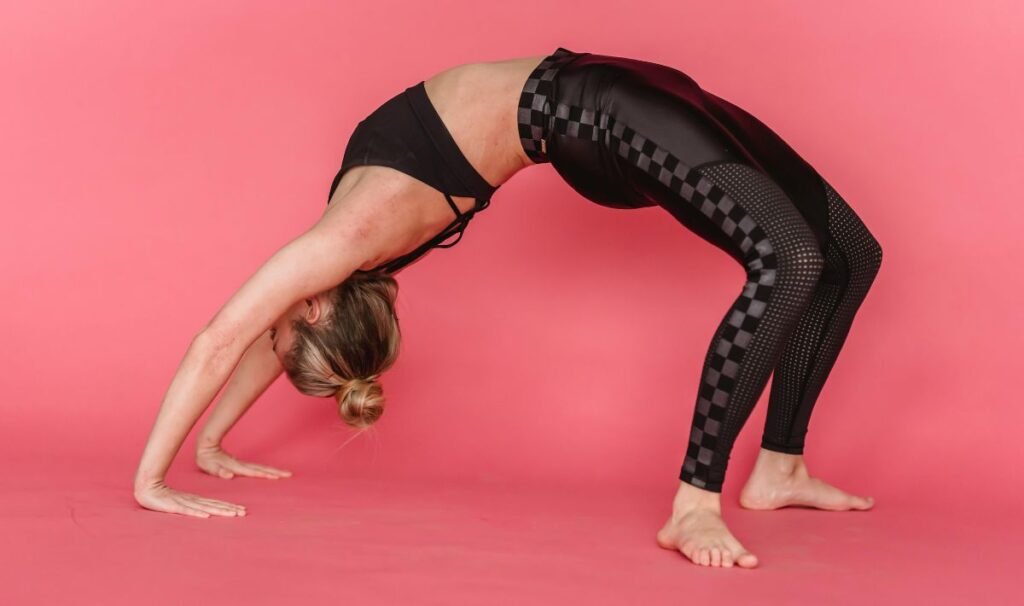Fallen Angel Pose, also known by its Sanskrit name, Devaduuta Panna Asana, is a stunning yoga posture that combines balance, strength, and grace. This pose resembles a fallen angel, with the body tilted to one side and the leg extending skyward like a heavenly wing. While it’s a visually impressive pose, it’s also deeply symbolic, representing humility, resilience, and the beauty of imperfection.
In this guide, we’ll take you step-by-step through mastering Fallen Angel Pose. We’ll cover everything from prep poses to tips for balance and alignment. Whether you’re a seasoned yogi or a beginner looking to expand your practice, this article will help you unlock the secrets of this ethereal posture. Let’s dive in!
Benefits of Fallen Angel Pose
Before we get into the “how-to,” let’s discuss why you might want to include Fallen Angel Pose in your yoga practice. Here are some of the key benefits:
Physical Benefits
- Strengthens Core Muscles: This pose demands significant engagement from your abdominal muscles, helping you build core strength.
- Improves Arm and Shoulder Strength: Supporting your body weight on one arm enhances upper body strength.
- Boosts Balance and Coordination: Fallen Angel challenges your equilibrium, sharpening your balance and body awareness.
- Enhances Flexibility: The extended leg and twist improve flexibility in the hamstrings, hips, and spine.
Mental and Emotional Benefits
- Encourages Focus: The complexity of this pose requires concentration, grounding you in the present moment.
- Builds Confidence: Mastering Fallen Angel Pose can feel empowering and boost your self-esteem.
- Cultivates Patience: This pose often takes time to achieve, teaching you to embrace the journey and trust the process.
Prep Poses Before Attempting Fallen Angel
Before attempting Fallen Angel, it’s important to warm up and prepare your body. These prep poses will help you build the strength, flexibility, and balance needed to safely and successfully execute the pose:
1. Child’s Pose (Balasana)
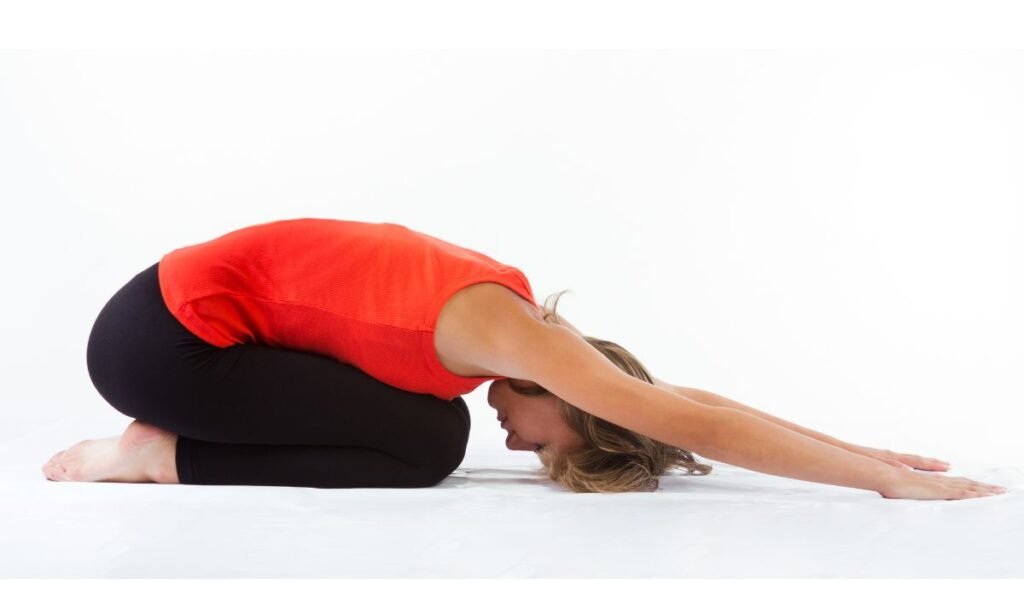
- Purpose: Opens the hips and stretches the lower back.
- How to Do It: Sit on your heels, fold forward, and extend your arms in front of you. Rest your forehead on the mat and take deep breaths.
2. Cat-Cow Pose (Marjaryasana-Bitilasana)
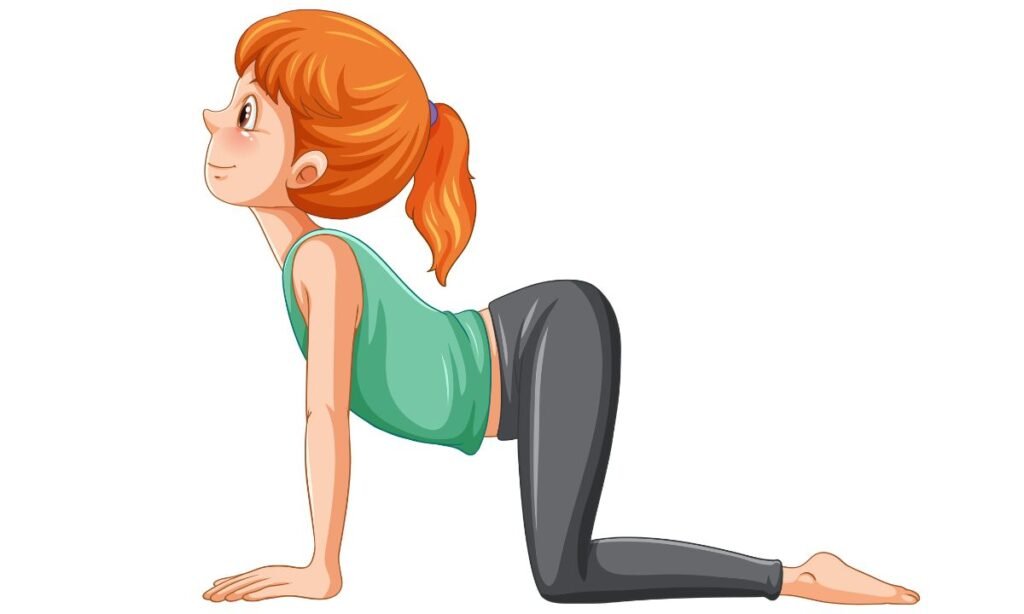
- Purpose: Warms up the spine and improves flexibility.
- How to Do It: Alternate between arching your back (Cow) and rounding it (Cat) while on all fours.
3. Side Plank (Vasisthasana)
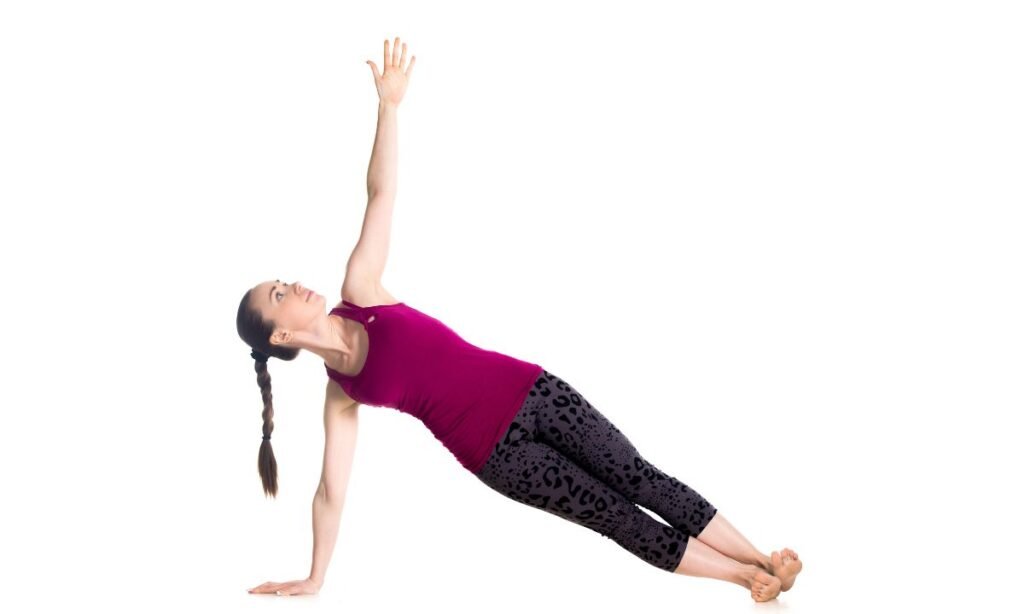
- Purpose: Builds arm, shoulder, and core strength.
- How to Do It: From Plank Pose, shift your weight onto one hand and rotate your body to the side. Stack your legs and lift your top arm.
4. Revolved Side Angle Pose (Parivrtta Parsvakonasana)
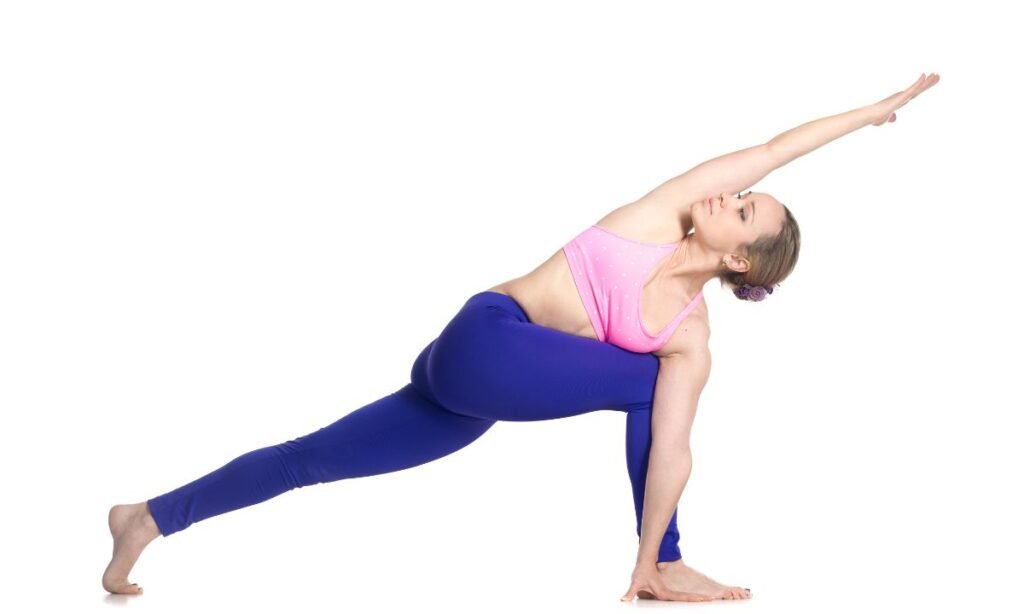
- Purpose: Prepares the body for the twisting motion in Fallen Angel.
- How to Do It: From Warrior II, place your opposite elbow on your bent knee and twist your torso toward the sky.
5. Crow Pose (Bakasana)
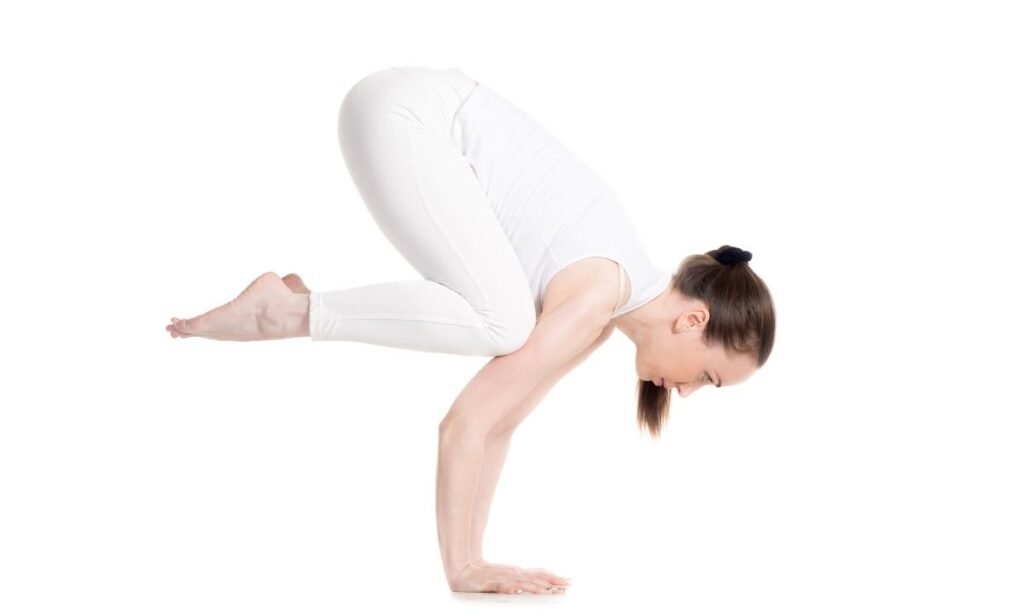
- Purpose: Teaches balance and strengthens the arms.
- How to Do It: Squat down, plant your hands on the mat, and lift your feet off the ground, balancing on your hands.
Step-by-Step Guide to Fallen Angel Pose
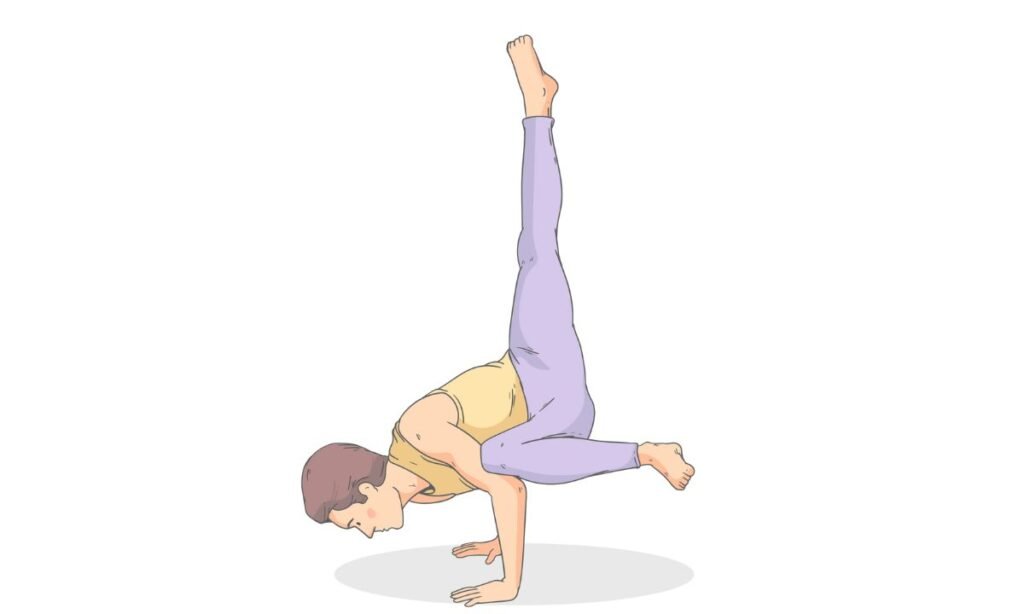
Now that you’re warmed up, let’s break down Fallen Angel Pose into manageable steps. Follow these instructions carefully to avoid injury and achieve the pose with confidence.
Step 1: Begin in Side Crow (Parsva Bakasana)
- Start in a squatting position with your feet together.
- Place your hands on the ground, shoulder-width apart, and twist your torso to one side.
- Shift your weight onto your hands, lifting your feet off the ground and balancing on your arms.
Step 2: Lower the Side of Your Face to the Ground
- Slowly lower the side of your face (typically the temple) to the mat.
- Keep your gaze soft and focused on a single point to maintain balance.
Step 3: Extend Your Top Leg Skyward
- Straighten your top leg and point your toes toward the ceiling.
- Keep your bottom leg bent and resting lightly on your supporting arm.
Step 4: Engage Your Core and Stabilize
- Tighten your core muscles to maintain balance and control.
- Press firmly into the ground with your supporting hand.
Step 5: Breathe and Hold
- Take deep, steady breaths as you hold the pose for 3-5 seconds (or longer, if comfortable).
- Focus on finding a sense of grace and ease within the challenge.
Step 6: Exit the Pose Safely
- To leave the pose, bend your extended leg and slowly lower both feet back to the ground.
- Rest in Child’s Pose for a few breaths before switching sides.
Tips for Mastering Fallen Angel Pose
Fallen Angel Pose can be tricky, but these tips will help you refine your practice and overcome common challenges:
1. Build a Strong Foundation
- Ensure your wrists, shoulders, and core are strong enough to support your body weight.
- Practice Crow Pose and Side Crow regularly to build strength and balance.
2. Use Props if Needed
- Place a yoga block under your supporting hand for extra height and stability.
- Use a folded blanket under your head for added comfort and protection.
3. Focus on Alignment
- Keep your elbows close to your body to prevent strain on your shoulders.
- Avoid collapsing into your wrist by evenly distributing weight across your hand.
4. Breathe Deeply
- Deep, steady breaths can help you stay calm and focused, even in challenging poses.
- Use your breath to guide your movements and transitions.
5. Be Patient
- Remember that mastery takes time. Celebrate small progress and practice consistently.
- If you fall out of the pose, laugh it off and try again.
Mistakes and How to Avoid Them
Mistake 1: Lack of Warm-Up
- Why It Happens: Skipping prep poses can lead to stiffness and injury.
- Solution: Spend at least 10-15 minutes warming up before attempting Fallen Angel Pose.
Mistake 2: Collapsing Into the Wrist
- Why It Happens: Weak wrists or improper weight distribution.
- Solution: Strengthen your wrists with exercises like Plank Pose and distribute weight across your entire hand.
Mistake 3: Losing Balance
- Why It Happens: Insufficient core engagement or lack of focus.
- Solution: Activate your core muscles and maintain a steady gaze.
Mistake 4: Overstraining
- Why It Happens: Pushing too hard too soon.
- Solution: Listen to your body and progress at your own pace.
Frequently Asked Questions
Q: Is Fallen Angel Pose suitable for beginners?
A: Fallen Angel Pose is considered an intermediate to advanced pose. Beginners should focus on building strength and balance with prep poses before attempting it.
Q: Can I practice Fallen Angel Pose if I have wrist pain?
A: It’s best to avoid Fallen Angel Pose if you have wrist pain or injuries. Focus on strengthening your wrists first.
Q: How long does it take to master Fallen Angel Pose?
A: The timeline varies for each person. With consistent practice, you can see progress within a few weeks to months.
Conclusion
Fallen Angel Pose (Devaduuta Panna Asana) is a breathtaking and rewarding yoga posture that combines strength, balance, and elegance. By following this step-by-step guide and incorporating the suggested prep poses, you can safely work toward mastering this beautiful asana. Remember, yoga is a journey, not a destination. Embrace the process, stay patient, and enjoy the transformation along the way.
Now, roll out your yoga mat and take the first step toward soaring into Fallen Angel Pose!

Sonu is a passionate yoga teacher with over 6+ years of experience helping individuals find balance, strength, and inner peace through the transformative power of yoga. As the creator of Pure Yoga Vibes, Sonu shares expert insights, inspiring practices, and a wealth of knowledge to support your wellness journey. Dedicated to creating a space for growth and mindfulness, Sonu’s mission is to make yoga accessible and enjoyable for everyone. For inquiries or collaborations, feel free to reach out at contact@pureyogavibes.com.

